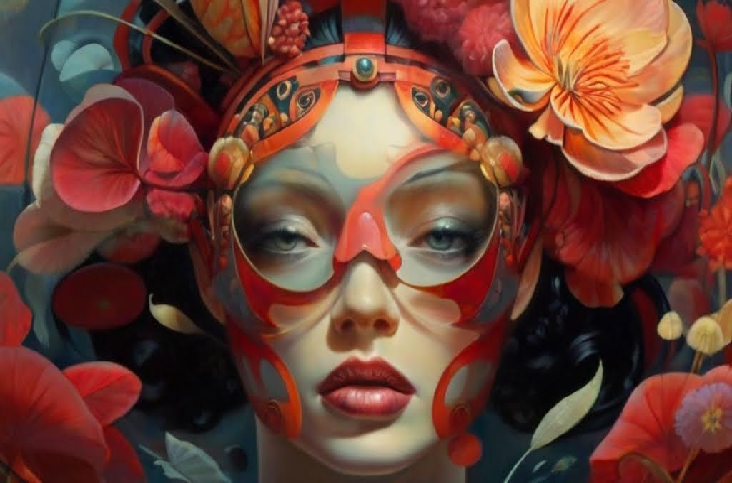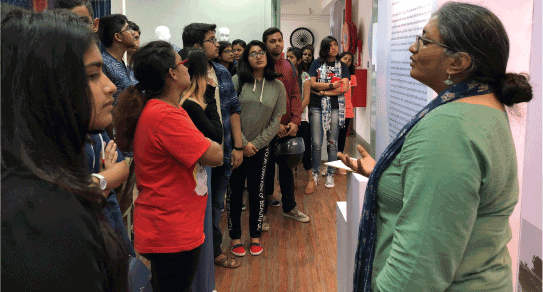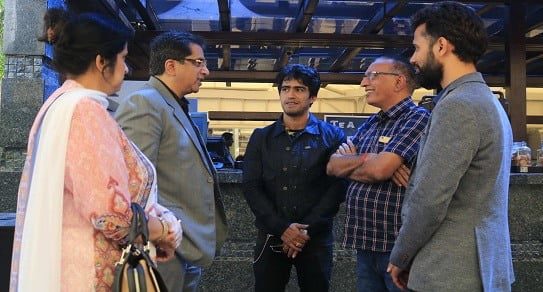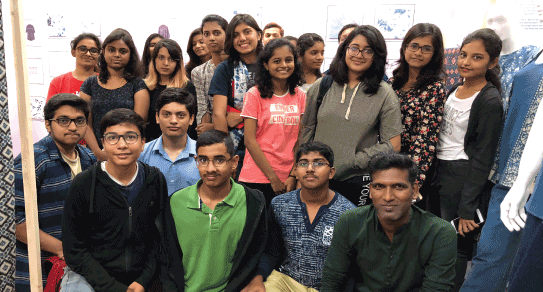Top Fashion Design Colleges in India 2023/ 2024 – India Today Rankings
Aspiring fashion designers in India have a plethora of talented colleges to choose from. But with so many options, it can be tough to decide

Draping is the technique of making a two-dimensional design three-dimensional. Draping has been practiced since 3500 BCE, with the Mesopotamians and Ancient Egyptians being the first to do so. The introduction of draped silhouettes like the chiton, peplos, chlamys, and himation followed in Greek fashion. The toga, a length of fabric that wraps and drapes around the body, was devised by the Etruscans and Ancient Romans.
Throughout the ages, clothing was categorized as either “fitted” or “draped.” A “fitted” garment would be sewn together and worn close to the body, in contrast to a “draped” garment, such as a toga that doesn’t require sewing. In today’s fashion world, both fitted and draped garments can be patterned using the draping process.
Starting with Madame Grès, renowned as the “Queen of the Drape,” draping has been a signature of various well-known designers. Her Grecian-inspired silk jersey costumes were masterfully draped and constructed, each consuming approximately 70 yards of silk jersey. Madame Grès and Pauline Trigère, French-born American designers, were both recognized for draping their creations on live models rather than dress forms.
Designers adore the craft of draping because it allows them to bring their visions to life by manipulating cloth on a dress form. Even though a designer starts with a design drawing, the draping process usually results in a fresh and more fascinating design. As a result, draping is regarded as the more creative approach to pattern creation.
Unlike traditional 2-dimensional patterning, draping allows the designer to gain a “feel” for the cloth as it is draped on the shape. Draping allows the designer to make better decisions when it comes to the suitability of cloth for a specific design.
While most fashion businesses no longer utilize draping as part of the design process, it is still an important technique that allows clothes designers to understand what makes a good fit and how to achieve it. If a garment sample fits poorly, a designer who understands how darts and seams form clothing can identify what’s causing the problem and advise the factory on how to fix it.
The art of draping, on the other hand, isn’t completely gone; most garments in high fashion, couture fashion houses, evening wear, and lingerie are created by draping. Before putting anything down on paper, the designer may see how her apparel creation will look on the body by draping it. This allows her to rectify any fit or design issues right away. Furthermore, some garment patterns are simply difficult to create with flat patternmaking and must be draped first. Some materials, too, must be tested on a dress form to determine how they behave.
While draping for apparel design may appear to be a difficult and time-consuming method of pattern creation, it is actually one of the most creative aspects of the fashion design process. Designers can play around with cloth and select where darts, tucks, and other design features should be placed.

Graphic design is described as “the art and practice of designing and projecting ideas and experiences with visual and textual information,” according to the American Institute of Graphic Arts (AIGA). In other words, graphic design is the visual representation of specific concepts or messages. These images might be as simple as a company logo or as complicated as website page layouts.
When asked to comment on the graphic design definition, designer Alexandros Clufetos states, “Graphic design takes graphical and linguistic aspects and applies them into numerous sorts of media.” “It facilitates the producer’s interaction with the consumer. It communicates the project’s, event’s, campaign’s, or product’s message.”
Companies can use graphic design to advertise and sell items through advertising, websites can use infographics to transmit complicated information in a digestible fashion, and corporations can use branding to build an identity, among other things.
It’s also crucial to realize that, while many graphic design projects are developed for commercial goals, such as commercials and logos, they are often used in other contexts, and graphic design work is frequently created just for aesthetic expression.
Elements of graphic design
Graphic designers also follow design principles, which are essentially a collection of criteria that aid in the composition of a design. These fundamental concepts contribute to the creation of the piece’s balance and stability.
Principles of graphic design
The old adage goes that “rules are intended to be broken,” and this is certainly true in this case. However, before making the purposeful decision to breach these standards, a skilled graphic designer must first comprehend them.
Types of graphic design
What precisely is graphic design? There is no one-size-fits-all definition, as you’ve just learned. Graphic design can be used in a variety of ways to solve business challenges and inspire creativity. You must decide what graphic design means to you and your future profession.
Aspiring fashion designers in India have a plethora of talented colleges to choose from. But with so many options, it can be tough to decide

Unfortunately, The “best” NIFT for you depends entirely on your individual needs, career goals, and preferences. It’s important to understand that each NIFT campus has

By signing up for IgniteIndia. You agree to the Terms of Services and PrivacyPolicy of the platform.
Fashion Designer, Educational and Career Counselor. He is an alumnus of NIFT and won the Best Graduation Project Award. He is guiding students from the past 15 years.
Fashion & Textile Designer, Educational and Career Counselor. He is an alumnus of NIFT and won the Best Graduation Project Award. He is guiding students from the past 10 years.
Ignite India Education is inspired by the former President of India Bharat Ratna Dr. APJ Abdul Kalam’s vision of “India Beyond 2020”. Our aim is to fulfil his vision by empowering society and transforming India into a developed nation through education.
Ignite India Education is inspired by the former President of India Bharat Ratna Dr. APJ Abdul Kalam’s vision of “India Beyond 2020”. Our aim is to fulfil his vision by empowering society and transforming India into a developed nation through education.
Fashion Designer, Educational and Career Counselor. He is an alumnus of NIFT and won the Best Graduation Project Award. He is guiding students from the past 15 years.
Fashion & Textile Designer, Educational and Career Counselor. He is an alumnus of NIFT and won the Best Graduation Project Award. He is guiding students from the past 10 years.
Ignite India Education is inspired by the former President of India Bharat Ratna Dr. APJ Abdul Kalam’s vision of “India Beyond 2020”. Our aim is to fulfil his vision by empowering society and transforming India into a developed nation through education.
Fashion & Textile Designer, Educational and Career Counselor. He is an alumnus of NIFT and won the Best Graduation Project Award. He is guiding students from the past 10 years.








Ignite India Alumni networks provide the long-term value to an educational institution by giving alumni the chance to stay in contact and continue to learn from each other long after they have left Institute. Ignite India is a Well Known Design Institute that equips students for success in career.